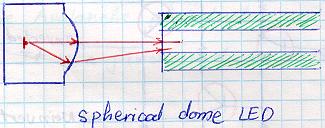
 Source
Coupling
Source
Coupling


And in addition, for an SLED (one with a Lambertian
radiation profile) going into a step index fibre, the power inserted into
the fibre can be calculated by

Finally, there
are three coupling systems that are most commonly used by manufacturers
1. Design uses discrete optical lenses





